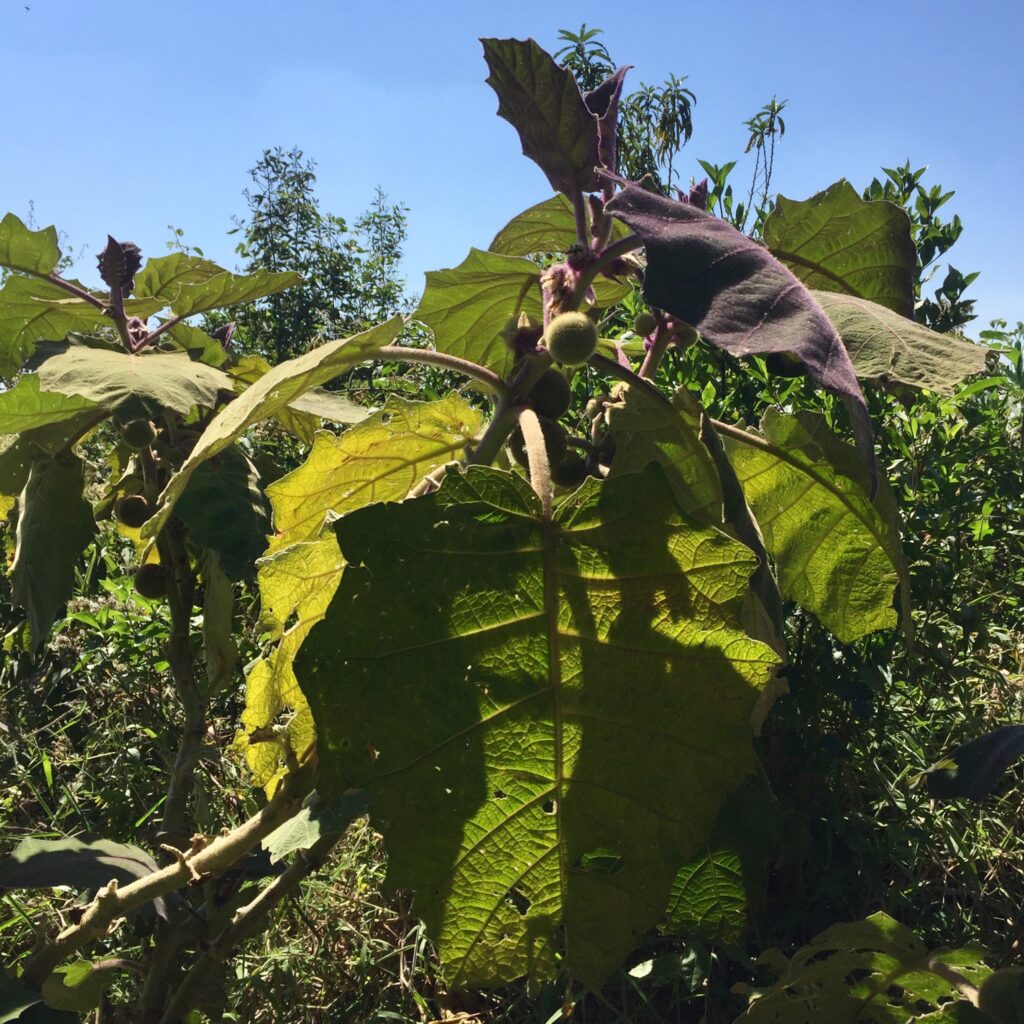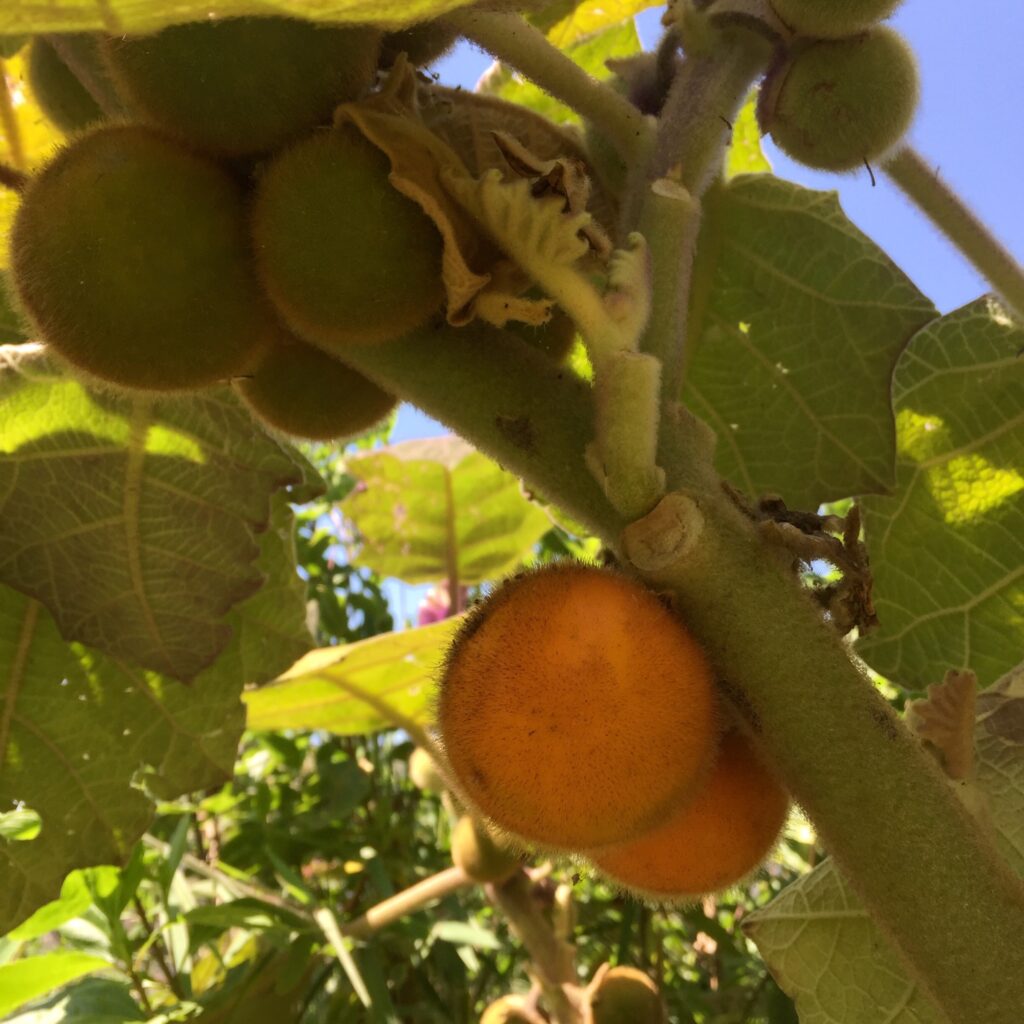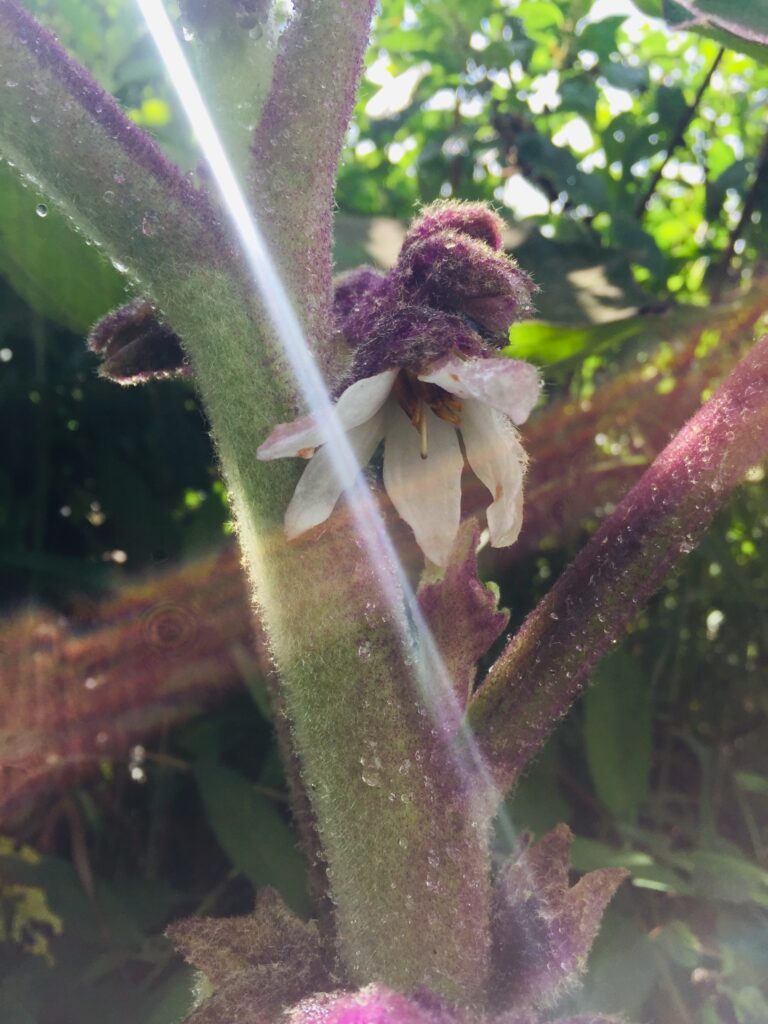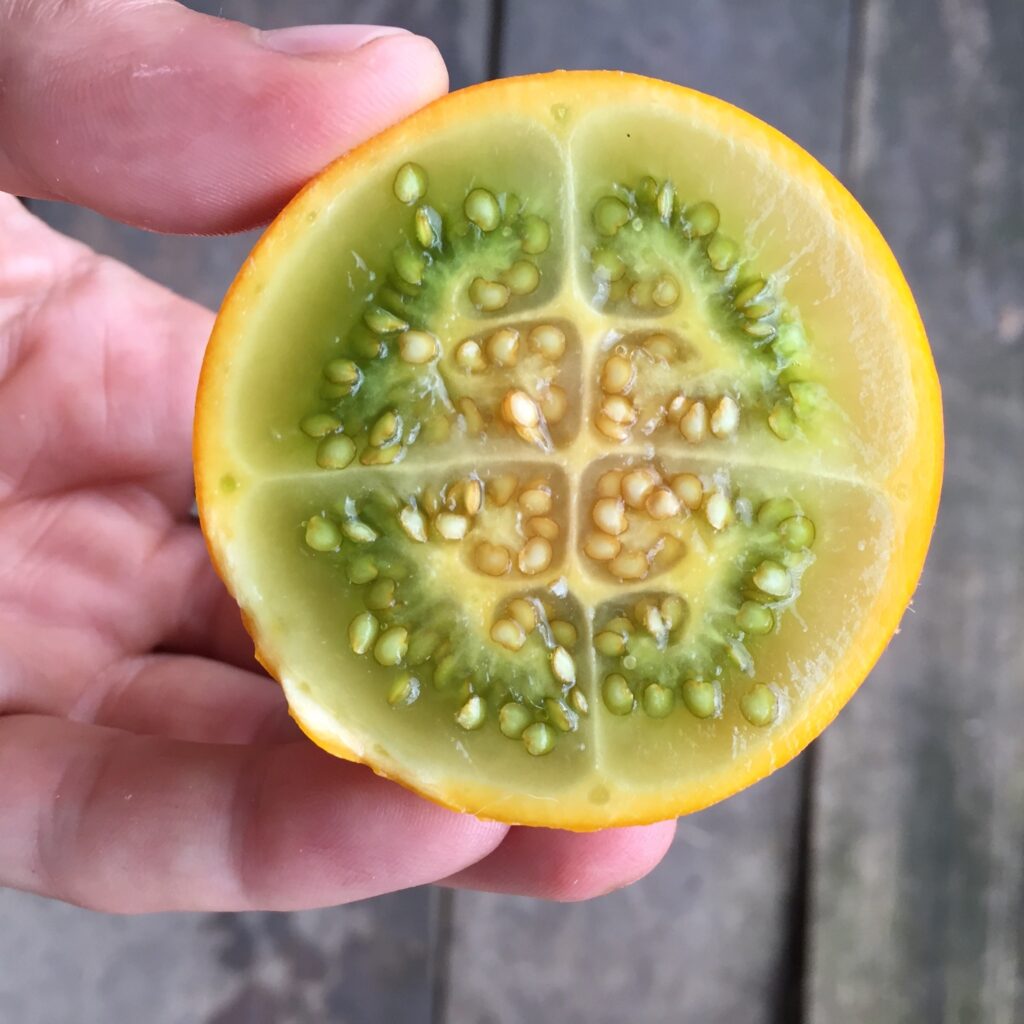One of our favorite Andean fruits to grow is naranjilla (Solanum quitoense). Also known as lulo, naranjilla is a Solanaceae (nightshade) family plant that produces an edible fruit popular in Ecuador and Columbia. Fruits have orange, fuzzy skin and tart, green flesh.
The fruits are best when fully ripe — which is when they are slightly soft and bright orange (though the skin may still be marbled with a bit of green).
Naranjillas are tasty raw, but are also delicious juiced, or added to muffins, jello, and hot sauce. In Ecuador, they are a common ingredient in savory meat stews and are used to flavor a variety of beverages.
Naranjilla is rich in vitamins, proteins, minerals & contains pepsin — an enzyme the assists in the digestion of protein.
Naranjillas are easy to pick, though the stiff hairs on the stem & fruits can be irritating to the skin. It’s best to wear gloves and rub off the fuzz with a cloth or thick gloves and then rinse the remaining hairs off with water before handling with bare skin.
The plant is a perennial, herbaceous shrub that grows 1–1.5m tall with spreading, brittle stems. It has fuzzy, dark green, purple, and white veined leaves. The pale purple flowers are also covered in hairs.

Naranjilla grows best in fertile, well drained slopes. It prefers soil that holds moisture, but drains well enough so that the roots aren’t water logged. It is particularly sensitive to salt.
Plants are propagated by seeds, cuttings, or grafts onto rootstock from other species, including Solanum macranthum & S. mammosum. Seeds germinate readily and cuttings root easily — especially when taken from older, slightly woody stems.
Pruning old woody stems after they have fruited encourages regrowth and helps improve fruit size. The plant responds well to being fertilized.
Plants need considerable moisture. Even moderately dry conditions will slow its growth. Naranjilla doesn’t grow well in temperatures below 10 degrees Celsius and above 30 degrees Celsius. It is sensitive to frost.

Altitude, on the other hand, does not seem to be a limiting factor for naranjilla plants. They grown at 2,100m in our gardens and near sea level in New Zealand and California.
According to the book, The Lost Crops of the Incas, “the species is unusually uniform for a cultivated plant.” It states that “two geographically separated varieties are recognized.” The spineless quitoense variety is found in southern Columbia and Ecuador (this is the kind we have). The variety septentrionale has spines and typically grows in central Columbia and Costa Rica at altitudes of 1,000-1,900 m.
In the Andes, naranjilla is general grown on rainy mountain slopes. In areas with year-round moderate temperatures, fruits will produce the whole year.
Naranjillas are a perennial and could continue to bear fruit for longer periods, but are often killed off by nematodes within a couple of years. The plants are extremely susceptible to root-knot nematodes (Meloidogyne species). Naranjilla are also favored by insects, including a variety of beetles and weevils, who will chew the leaves. The plants can also be susceptible to bacterial wilt, fungal infections, root & stem rots, and viruses.
Lost Crops of the Incas, states that growing a cover or rotation crop of certain plants, like velvet bean or Indigofera species, can help to eliminate nematode infestations. Another possibility for prolonging the life of plants is grafting naranjilla to nematode resistant root stock of related plants.
Naranjillas grow readily in our gardens. Plants volunteer here and there and will often produce a decent amount of fruit, though they do tend succumb to nematodes fairly quickly.

If you live outside of the Andean sierras, you likely won’t find naranjillas available for sale. Naranjillas have had little commercial development, despite being quite popular in the Northern Andes.
This is due, at least in part to the fact that the fruit would likely be a challenge to produce in a wide scale. It is probably limited to a fairly narrow range of habitats due to its specific moisture and temperature requirements. It may also need a specialized pollinator.
If you are fortunate enough to visit or live in an area where naranjilla grows, be sure to give this sweet-tart fruit a try. It’s certainly one of our favorites.


